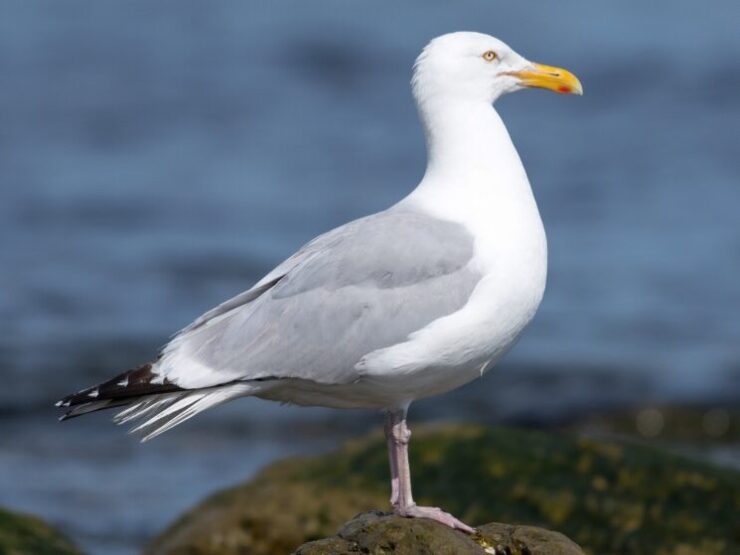Distinguishing Features – Head, neck, tail and under parts, white; back and wing covers, pearly gray. Wing tips, black with small white tip on each feather. Bill, yellow with a red spot at end of lower mandible. Eye, yellowish; eye-ring yellowy-orange. Legs, flesh colour. Male and female are essentially indistinguishable.
- Size – 58.5 – 66 cm
- (23.5 – 26.5 in)

Habitat
Widespread. Around waterways or inland, at dump sites or farm fields.
Nesting
Mainly in colonies, on the ground, rarely in trees, most often on islands, rocky shoreline or large boulders in lakes and rivers. Nest is usually a depression lined with moss, grass and available soft materials.
Eggs, 2 – 3; bluish-gray to brownish, marked randomly with dark brown blotches. Incubation period 25 – 28 days.
Notes
Commonly called the “Seagull”, the Herring Gull is best known as a scavanger. It is most often seen in large, noisy flocks congregating where food is available, around fishing boats, picnic grounds and garbage dumps.
Many people consider it a nuisance, but the Herring Gull performs a valuable service. It scavanges up great numbers of dead or injured animals and organic litter which could pose a health threat to humans.
In the fields, it devours large amounts of destructive pests such as grasshoppers, and mice. However, its natural diet includes aquatic life – fish, crustaceans and, sometimes, the eggs and young of other species.
The call of the gull is distinctive, a shrill, scratchy Eurl repeated incessantly.

